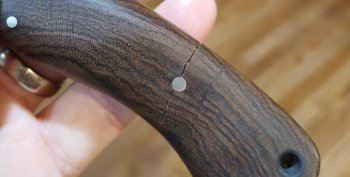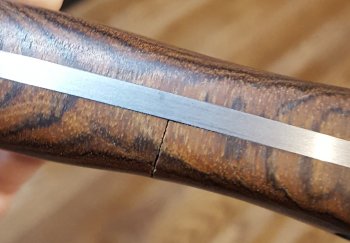Justin Presson
Well-Known Member
Well it was bound to happen at some point I guess Im just glad it was one of mine and not a customers.
This knife I finished in August. I have taken it hunting with me a few times and the rest of the time it has set on my bench in my basement workshop. It actually had another flaw and I disnt let it out of my shop so blessing in disguise I guess.
Yesterday I was cleaning and decided to move it to the gun safe and noticed this large crack.
This is natural Bocote. Why do you think it cracked....just shrunk due to the low humidity? The tang feels proud all around too.


This knife I finished in August. I have taken it hunting with me a few times and the rest of the time it has set on my bench in my basement workshop. It actually had another flaw and I disnt let it out of my shop so blessing in disguise I guess.
Yesterday I was cleaning and decided to move it to the gun safe and noticed this large crack.
This is natural Bocote. Why do you think it cracked....just shrunk due to the low humidity? The tang feels proud all around too.



